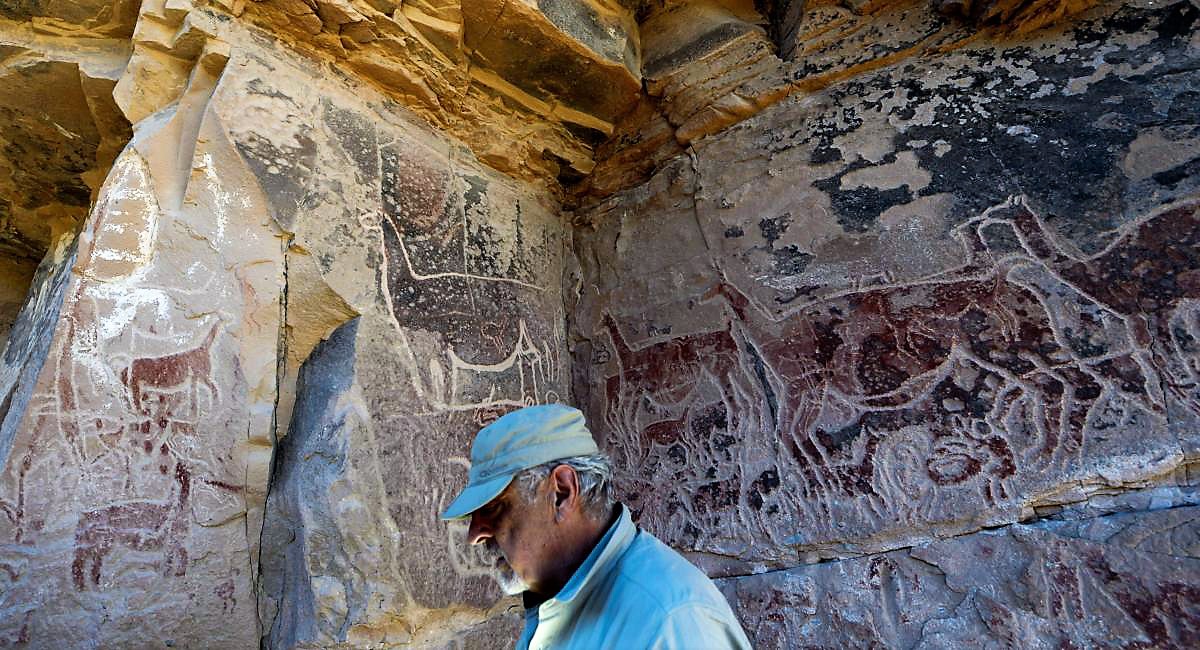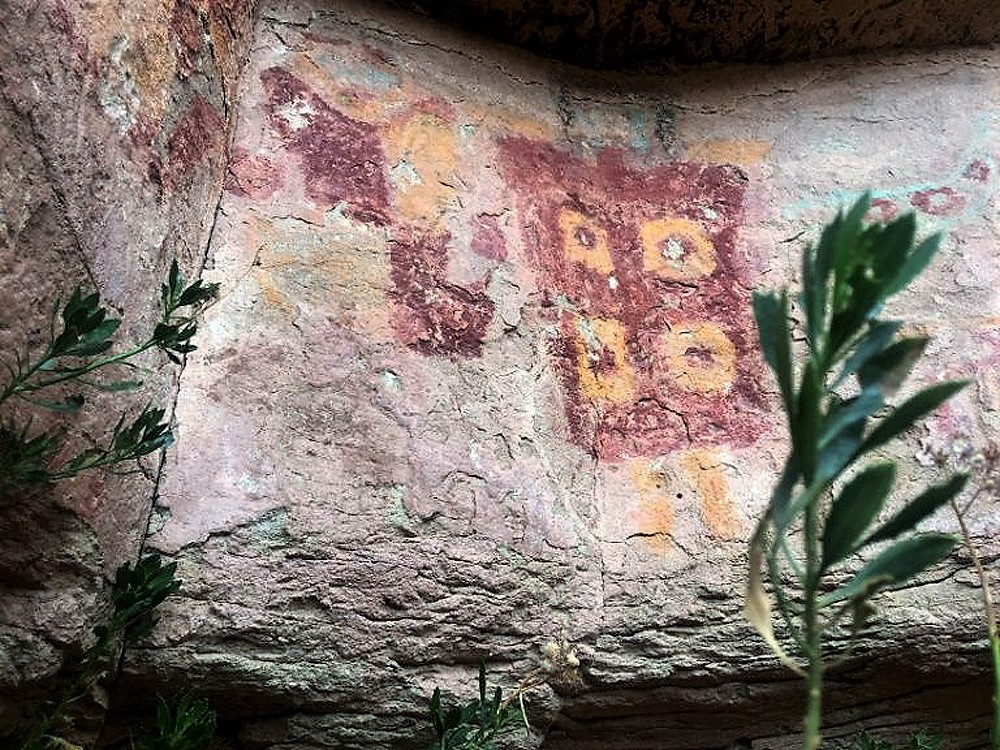


An article on Arab News - Chile's rock art llamas divulge secrets of ancient desert culture - reports on rock art in the Taira Valley which reveal the importance of llama over millennia.

Archaeologist Jose Bereguer, curator at Santiago's Museum of Pre-Columbian Art, describes the site as the most complex in South America because of its astronomical importance as well as the significance to local shepherds. (AFP)
Conservationists working in Chile's Atacama Desert are hoping that UNESCO will recognize the Taira Valley rock art with heritage site status, not only for its ancient art but also to help sustainable tourism in the region.
Archaeologist and curator of Santiago's Museum of Pre-Columbian Art, Jose Bereguer describes the site as one of the most complex in South America. First rediscovered by Swedish archaeologist Stig Ryden in 1944, the Taira rock art is believed to be between 2,400 and 2,800 years old.
Taira Valley rock art of #Chile https://t.co/X5EVAS2Chi #archaeology #llama #SouthAmerica pic.twitter.com/yHTlWE2rZA
— Bradshaw Foundation (@BradshawFND) July 31, 2018
Multiple llama depictions in the Taira shelter. (AFP)
It is made up of a gallery of 16 paintings with engraved outlines on the banks of the Loa River that traverses the desert. The most impressive group of paintings is found in the Alero shelter, where the importance of the llama becomes abundantly clear.
The llama was the principal source of wealth for desert dwellers over thousands of years, as well as being used in ritual ceremonies throughout the Andes, such as in the 'Wilancha' sacrifice to 'Mother Earth'.

The varied rock art at the Taira shelter. (AFP)
Bereguer states that ethnography provides an understanding of the past; according to Rumualda Galleguillos, one of around 15 indigenous people still raising llamas in the Atacama Desert, the rock art is a testament to his forefathers.
The majority of the paintings - in red, yellow and white - depict llamas of various sizes, some pregnant, others suckling their young. Other depictions include foxes, snakes, ostriches, partridges and dogs. The few human figures that appear are very small. There are also some geometric designs.
Berenguer believes that there is an astronomical connection to the rock art. The Alero shelter is completely illuminated by the sun on both the winter and summer solstices.
Visit the South American Rock Art Archive:
by Bradshaw Foundation
Monday 03 February 2025
by Bradshaw Foundation
Friday 09 August 2024
by Bradshaw Foundation
Wednesday 24 July 2024
by Bradshaw Foundation
Thursday 04 July 2024
by Bradshaw Foundation
Monday 01 July 2024
by Bradshaw Foundation
Wednesday 20 March 2024
by Bradshaw Foundation
Tuesday 13 February 2024
by Bradshaw Foundation
Tuesday 13 February 2024
by Bradshaw Foundation
Thursday 01 February 2024
by Bradshaw Foundation
Tuesday 28 November 2023
by Bradshaw Foundation
Thursday 23 November 2023
by Bradshaw Foundation
Monday 20 November 2023
by Bradshaw Foundation
Tuesday 31 October 2023
by Bradshaw Foundation
Thursday 26 October 2023
by Bradshaw Foundation
Wednesday 20 September 2023
by Bradshaw Foundation
Monday 17 July 2023
by Bradshaw Foundation
Monday 03 February 2025
by Bradshaw Foundation
Friday 09 August 2024
by Bradshaw Foundation
Wednesday 24 July 2024
by Bradshaw Foundation
Thursday 04 July 2024
by Bradshaw Foundation
Monday 01 July 2024
by Bradshaw Foundation
Wednesday 20 March 2024
by Bradshaw Foundation
Tuesday 13 February 2024
by Bradshaw Foundation
Tuesday 13 February 2024
by Bradshaw Foundation
Thursday 01 February 2024
by Bradshaw Foundation
Tuesday 28 November 2023
by Bradshaw Foundation
Thursday 23 November 2023
by Bradshaw Foundation
Monday 20 November 2023
by Bradshaw Foundation
Tuesday 31 October 2023
by Bradshaw Foundation
Thursday 26 October 2023
by Bradshaw Foundation
Wednesday 20 September 2023
by Bradshaw Foundation
Monday 17 July 2023
Friend of the Foundation











